#BOUsci23 – Keynotes
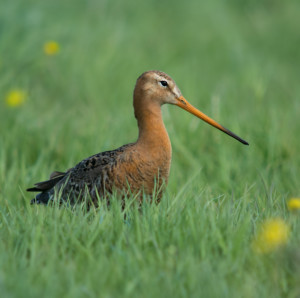
Global flyways: a synthesis of bird migration research
21 – 22 November 2023
ON ZOOM AND TWITTER
Keynote presentations
Africa-Eurasia flyway
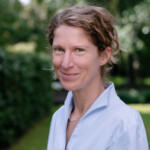 Blackcap migration: adaptation in time and space
Blackcap migration: adaptation in time and space
Miriam Liedvogel
Institute of Avian Research, Germany
Understanding the genetics of bird migration is a long-standing goal in evolutionary biology. Blackcaps Sylvia atricapilla are ideal for this work as different populations exhibit enormous difference in migratory behaviour and little else. We characterize (i) phenotype, population structure and demographic history of the blackcap, and (ii) identify sequence variants and signaling pathways that are associated with variation of the migratory phenotype.
My talk covers insight from classical studies on selection and cross-breeding experiments, tracking approaches in the wild, to finally introducing novel insight from using a de novo assembled genome of the blackcap as reference for large scale demographic study with different phenotypes across their breeding range.
Miriam Liedvogel is an evolutionary biologist using behavioural genomics approaches to understand the genetic architecture of bird migration. How is this fascinating behaviour controlled, coordinated and regulated on the molecular level? Her work combines careful behavioural observation and state-of-the-art tracking migration in the wild to carefully characterise migratory behaviour under controlled conditions as well as free flying birds, with whole genome sequencing approaches to match genotype to phenotype.

Tale of two continents: Integrated approaches to inform collaborative conservation of migratory birds in North America and Europe
Brady Mattsson
University of Natural Resources and Life Sciences, Austria
Drivers of population dynamics in migratory birds are uncertain but likely linked to global change including shifts in climate and land cover being induced by humans. Changes in abundance of these species may, in turn, generate conflicts between conservation organizations and other interests including fisheries, hunting, and agriculture. These coupled human and natural systems span continents and pose enormous challenges for environmental policy and management.
Scientific and technological advances have led to modelling tools for predicting impacts from shifts in climate, land use, or both on migratory populations. Predicting such impacts alone, however, is often insufficient to inform conservation decisions. These choices must often take into account concerns of diverse stakeholders.
The field of collaborative decision analysis offers diverse tools that have been useful at the science-policy interface of wildlife management. These tools integrate predictions and value judgements for quantitative comparisons among decision options while accounting for tradeoffs among competing objectives. In the past three decades, investigators have applied decision analysis to inform decisions to conserve migratory birds in North America. Despite its demonstrated potential for informing real-world decisions, this approach has yet to become common practice in conserving migratory species on other continents.
I will highlight my research to address these scientific challenges related to conservation of migratory species in North America (waterfowl including northern pintail, Anas acuta) and Europe (raptors including red kite, Milvus milvus). I then present a synthesis and outlook on establishing integrated research approaches at the science-policy interface to inform collaborative conservation of migratory species.
Brady Mattsson is working as an Assistant Professor at the University of Natural Resources and Life Sciences in Vienna, Austria. A main focus of his research is the conservation and sustainable management of migratory species, especially birds. His research includes population dynamics and flows of associated ecosystem services within and between flyways. He also develops and tests tools using collaborative decision analysis to inform conservation and natural resource management.
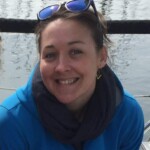
Seabird flyways: a framework for international collaboration
Tammy Davies
Birdlife International, UK
Many seabird species are wide-ranging, travelling thousands of kilometres across national and international waters, only returning to land to breed. Such migratory species are increasingly exposed to the expanding cumulative human impacts in the oceans. Consequently, seabirds are one of the most threatened groups of vertebrates in the world, with half of the species with a known trend in decline.
There is a remarkable diversity of migration patterns among seabird species, but also consistency across individuals and populations. Regular routes used by large numbers of birds travelling between breeding and non-breeding grounds are known as flyways.
We used tracking data from long-distance migrant seabirds from six families (Diomedeidae, Hydrobatidae, Laridae, Phaethontidae, Procellariidae, Stercorariidae) to identify these broad routes at an ocean-basin scale. The migration of thousands of individual seabirds that follow the same routes, irrespective of timings, were clustered together. The broad shape flyways were visualised for each cluster using a utilisation distribution approach, thereby weighting the importance of regions by the numbers of individuals.
The flyway approach provides a framework to help foster international collaboration and focus attention on the strategic needs for the conservation of migratory birds. We show how seabird flyways can be an important advocacy tool to help coordinate conservation action to address key threats, foster political cooperation, and frame multilateral legal agreements.
Tammy Davies is the Marine Science Coordinator at BirdLife International, overseeing the science work that underpins the BirdLife International Marine Programme. This includes using seabird tracking data to direct conservation action through identifying important areas for protection and areas where seabirds may be at the greatest risk from human activities. Tammy has research interests in evidence-based conservation and the challenge of managing the high seas.

Moving towards a more equitable flyway: how to tackle current barriers constraining a more regionally balanced research and conservation
Mohamed Henriques
University of Groningen, the Netherlands
xxxxxxx
Trans-Atlantic keynote

Energy efficiency shapes global bird migration flyways
Marius Somveille
University College London, UK
Billions of birds migrate every year between breeding and wintering grounds, exhibiting a remarkable diversity of routes and seasonal destinations both between and within species. These seasonal movements of migratory birds cause a redistribution of bird diversity that radically changes avian community composition worldwide. Despite much research describing migratory behaviour, the underlying forces driving avian migration patterns remain largely unknown. In this talk, I will present my work exploring the hypothesis that energy efficiency drives bird migration across scales. This hypothesis states that birds migrate in a way that minimizes energy expenditure while targeting areas for maximum energy assimilation, considering intra- and inter-specific competition for access to resources. I will show that mechanistic models based on energy efficiency can explain much of the patterns of global bird migration, indicating that migration is an adaptation allowing birds to optimize their energy budget in the face of seasonality and competition. This work reveals fundamental similarities and differences between the Africa-Eurasia and Americas flyways, and it provides a strong basis for exploring additional processes underlying the ecology and evolution of migration, particularly when investigating species and populations that do not seem to migrate optimally. Finally, this research also provides a framework for predicting how environmental change may affect migratory species.
Marius Somveille’s research aims to use a macroecological approach to study the causes and consequences of animal movements, particularly under climate change. The main phenomenon that he studies is the seasonal migration of birds across the world. Marius is also interested in studying how propagules and information spread in populations of moving animals.
Americas flyway
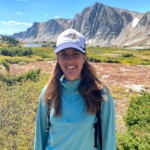
The Bird Genoscape Project: applying genomics to full annual cycle bird conservation
Kristen Ruegg
Colorado State University, USA
Research suggests that nearly half of all songbird populations in the Western Hemisphere are in decline, and these declines are expected to be exacerbated by the impacts of climate change. However, understanding the precise locations of the most significant population declines has proven challenging due to the long-distance movements of migratory birds across their breeding, migratory, and wintering territories. In the upcoming presentation, I will delve into our efforts to tackle this pressing issue through the development of the The Bird Genoscape Project. This collaborative endeavor aims to unite scientists from across the Western Hemisphere to map the migratory routes of songbirds using genetic tools. Specifically, the main objectives of the Bird Genoscape Project are to: 1) create comprehensive, visually impactful, migratory flyway maps for birds that can be used to motivate conservation efforts across geographic and political boundaries, and 2) map the potential for bird populations to adapt to climate change. Throughout this presentation, my focus will particularly center on how data derived from the Bird Genoscape Project are being leveraged to pinpoint threats faced by migratory birds across their annual cycles.
Kristen Ruegg’s work focuses on understanding the mechanisms that generate and maintain species diversity in a changing world. Kristen specializes in the application of genomic tools to address basic and applied evolutionary and ecological questions, specifically related to migratory animals such as: 1) How are genetically distinct populations connected across the annual cycle? 2) What is the role of migration in generating species diversity? And 3) Which populations will have to adapt most to keep pace with climate change? The methods she uses are integrative, combining field-based behavioral studies, population genetics/genomics, and GIS-based ecological modeling. Her main focus is co-directing the Bird Genoscape Project, a large multi-institutional effort to harness genomic methods for migratory bird conservation.

Chancing on a spectacle: co‐occurring animal migrations and interspecific interactions
Emily Cohen
University of Maryland, Center for Environmental Science, USA
Around the world, the migratory routes of different animal species often converge in space and time, a phenomenon we term ‘co‐migration.’ Animal migration studies often report two or more species with coinciding migrations, suggesting that co-migrations are common across taxonomic groups and geographies, although they are rarely studied. Co-migrating species can interact through competition, social information use, predation, and parasite transmission. These interactions may influence routes, phenology, condition, or survival and may carry-over to affect subsequent life history stages of individuals and populations. Additionally, interactions within and among species during migration are expected to manifest themselves in unique ways because of the added limitations of time and energy. We investigate support for migrating animals as interacting communities, as many migrations are declining or shifting, with unexplored consequences for co-migrant species.
Research in Dr. Cohen’s laboratory broadly aims to understand animal migration biology in the context of the full annual cycle. We live in a rapidly changing world where many species are declining, and this is especially true for migratory species. It is possible that changes in habitat, climate, and resource availability due to unprecedented human activity are inflating the costs associated with animal migration. At the same time, advancing technologies and analytical tools are making it possible to solve many of the important mysteries about migratory animals. Dr. Cohen’s research makes use of field, lab, and remotely sensed data integrated with rigorous quantitative tools to 1) address fundamental questions about migration biology, 2) understand how and why migration is changing and migratory species are declining, and 3) develop tools for the inclusion of stopover and airspace habitats into conservation and management efforts for migratory species.
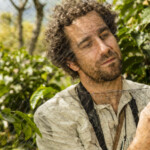
The role of diverse Neotropical overwintering and stopover habitats in sustaining migratory landbirds in the Americas flyway
Nick Bayly
SELVA, Colombia
The Nearctic-Neotropical migration system supports one of the most diverse migration flyways on the planet and in common with migration systems across the globe, it is in decline. Key to understanding and reversing these declines is a better understanding of the role of Neotropical stopover and non-breeding sites in sustaining landbird migrations. The Neotropical region is characterized by extreme heterogeneity and diversity in landcover but also by a greatly reduced landmass relative to the temperate and boreal breeding grounds. In this presentation we will explore how migratory landbirds distribute themselves across this complex geography, the habitats they depend on, and how these shape migratory strategies. We will discover how some species are habitat specialists, occupying geographically restricted ecosystems, while others stopover across broad regions. We will examine the critical role that seasonal fluctuations in resources play in fuelling the migration of species like the Blackpoll Warbler and the Yellow-billed Cuckoo, and how variable habitat quality can carry over to influence the pace of migration. We will also explore the role that stationary non-breeding habitats play in shaping migration strategies and finish by discussing how divergent strategies and Neotropical habitat use may influence survival and breeding phenology, and the actions we can take to protect the flyway against further losses.
As Director of the Migratory Ecology program, Nick Bayly manages several projects focused on understanding the non-breeding ecology of migratory landbirds to aid their conservation. He also supports the implementation of resulting conservation recommendations, including ecological restoration activities and the management of agroforestry systems aimed at improving habitat quality for species of conservation concern. Parallel to these activities, Nick dedicates time to supervising undergraduate and graduate students, acting as a reviewer for eBird and participating in several voluntary groups including the Motus, Cerulean Warbler, and Golden-winged Warbler working groups, among others.
Trans-Pacific keynote

Why do we know so much about migratory birds but not enough to conserve them?
David Wilcove
Princeton University, USA
For decades, scientists and citizen naturalists have been sounding the alarm over declines in populations of migratory birds across much of the globe. Thousands of scientific papers, reports, and news articles have been published on the magnitude, likely causes, and consequences of these declines. Moreover, technological advances have enabled ornithologists to explore aspects of bird migration that were simply unknowable just a decade or two ago. Yet, notwithstanding these impressive accomplishments, there remain dangerous gaps in our understanding of the cumulative impacts of different threats on migratory birds and in the spatially explicit habitat needs of these birds across their annual cycles. I will explore these gaps with respect to two well-studied and charismatic groups of migrants: songbirds migrating from the eastern United States and Canada to wintering grounds in Latin America and the Caribbean, and shorebirds migrating along the East-Asian Australasian Flyway. Given all that we know about these remarkable birds, what more do we need to know to successfully protect them?
David S. Wilcove is a professor of ecology, evolutionary biology, and public affairs at Princeton University. The primary question driving his research is “How do we find room for biodiversity in an increasingly hot, hungry, and crowded world?” Accordingly, his work focuses on the impacts of farming, logging, hunting, climate change, and other human activities on biodiversity. He and his graduate students and postdocs have studied these issues around the world, from New Zealand to the Amazon Basin and from Siberia to Borneo. Prior to joining Princeton’s faculty in 2001, he worked as a scientist for the Environmental Defense Fund, The Wilderness Society, and The Nature Conservancy. He is the author of two books—No Way Home: The Decline of the World’s Great Animal Migrations (2007) and The Condor’s Shadow: The Loss and Recovery of Wildlife in America (1999)—and many technical and popular articles in the fields of conservation biology, ornithology, and wildlife conservation. Professor Wilcove serves or has served on the boards of directors of the Doris Duke Charitable Foundation, Society for Conservation Biology, Rare, American Bird Conservancy, Natural Areas Association, Galapagos Conservancy, and New Jersey Audubon Society, among other organizations. He has received awards from the Society for Conservation Biology, Defenders of Wildlife, the Pew Foundation, The Nature Conservancy, The Wildlife Society, and the Hauptman-Woodward Medical Research Institute. He received his undergraduate degree from Yale University and his doctorate from Princeton University.
Asia-Pacific flyway
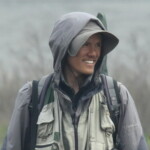
Where to draw the line? Using movement data to inform conservation decisions and conserve migratory waterbirds in East Asia
Chi-Yeung (Jimmy) Choi
Duke Kunshan University, China
Populations of many migratory waterbird species along the East Asian-Australasian Flyway have declined substantially over the last few decades. Through systematic investigations on their movement ecology and habitat use patterns along the flyway, it became clear that the traditional protected area framework often failed to cover many of the key waterbird sites and the full range of habitats adequately. Combining the latest technology in wildlife tracking and remote sensing with field observations, there has been an improved understanding of the habitat requirements and activity pattern of migratory waterbirds and these laid the foundation for evidence-based conservation management actions. It is important to make tracking data more readily available, especially to local decision-makers and stakeholders, so that protected area boundaries can be adjusted based on birds’ needs and integrate natural and artificial habitat management to improve the habitats for migratory waterbirds. The movement data could also be used to provide decision-makers with a more holistic view that takes the need of waterbirds into consideration when planning well-meaning projects such as mangrove plantations and green energy infrastructure development. These efforts do not only contribute to nature conservation but also to the restoration of wetland ecosystems on which humans depend.
Chi-Yeung (Jimmy) Choi is an applied ecologist at Duke Kunshan University. He studies the ecology of migratory waterbirds, with a focus on their foraging and movement ecology within and between coastal intertidal wetlands. The work has led to investigations of diet, habitat use, local movement, population dynamics, as well as migration phenology and strategies, often using the latest technology in wildlife tracking and remote sensing.

Uncovering migration of White-naped Cranes using GPS telemetry in East Asia
Nyambayar Batbayar
Wildlife Science and Conservation Center of Mongolia, Mongolia
xxxxxxx
xxxxxxx

Novel mapping of the flyway corridors of large-bodied waterbirds in the East Asian Australasian Flyway
Cao Lei
Research Center for Eco-Environmental Sciences, Chinese Academy of Sciences, China
We combined recent tracking data from large-bodied waterbird species in the EAAF to define their flyway corridors, linking discrete breeding, moulting, staging and wintering distributions to define their biogeographical sub-populations. For the first time, this provides the foundation for generating population estimates and trends for these newly identified biogeographical units, especially those of unfavourable conservation status. Combined with remote sensing data, results have vastly improved our understanding of their geographical ranges and the key sites and habitats used by six waterbird groups (cranes, storks, pelicans, spoonbills, swans and geese) throughout their annual cycle. The results confirm the importance of relatively few major Asian river floodplains and their associated wetland habitats in China and Russia. With continuing development pressures in the region, it is vital that we use this information to support flyway initiatives to protect these floodplains, wetlands and waterbirds to safeguard them for the enjoyment of future generations.
Dr. Cao Lei is a Professor in the State Key Laboratory of Urban and Regional Ecology at the Research Center for Eco-Environmental Sciences, Chinese Academy of Sciences. Professor Cao Lei focuses on wetland and waterbirds ecology and conservation, and movement ecology. Recent technology innovations in IT and micro-electronics have led to the rapid development of satellite tracking devices and techniques. By deploying cutting-edge transmitting devices, Professor Cao’s group has initiated tracking programs in many sites in and outside China. Professor Cao is also coordinating a national monitoring and research network of bird-tracking in East Asia.
Scientific Programme Committee
Africa-Eurasia Flyway
Dr Wouter M.G. Vansteelant | Co-chair | University of Groningen, the Netherlands
Dr José A. Alves | Co-chair | University of Iceland, University of Aveiro, Portugal & BOU Meetings Committee
Vojtech Brlik | Charles University, Czech Republic
Dr Maria A. Dias | University of Lisbon, Portugal
Steve Dudley | Consultant, Scotland
Dr Catriona Morrison | University of East Anglia, UK & BOU Meetings Committee
Dr Elham Nourani | Max Planck Institute of Animal Behavior, Germany
Americas Flyway
Dr Elly Knight | Co-chair | University of Alberta, Canada
Dr Camila Gómez | Co-chair | SELVA, Colombia
Fengyi Guo | Princeton University, United States
Dr Bryant Dossman | Georgetown University, United States
Asia-Pacific Flyway
Dr Yachang Cheng | Co-chair | Sun Yat-sen University, People’s Republic of China
Sayam Chowdhury | Co-chair | University of Cambridge, UK
Dr Yong Ding Li | BirdLife International, Singapore
Dr Judit Szabo | Charles Darwin University, Australia
Dr R. Suresh Kumar | Wildlife Institute of India, India
Batmunkh Davaasuren | Wildlife Science and Conservation Center of Mongolia, Mongolia
Image credit: Top right, Black-tailed Godwit (top small) | Frank Vassen CC BY 2.0 Wikimedia Commons

